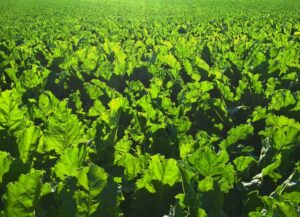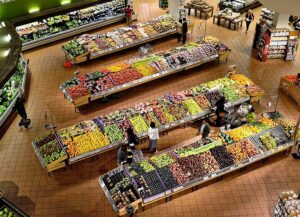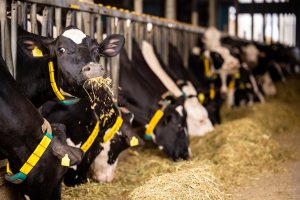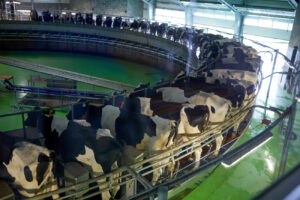Carlos Moroni & Fernando Diaz
High-quality forage is an important component of the dairy cow diet in pasture-based milk production systems. Commonly used pasture is characterized by good digestibility, and a high protein concentration. It is important that these diets are well balanced since excess protein (particularly rumen degradable protein) generates excess ammonia in rumen and blood and increased urinary N excretion. Excessive nitrogen (N) generates inefficiencies due to higher energy expenditure for its metabolism and greater environmental impact.
Fodder beet (FB) is presented as an alternative to complement high-protein fodder diets at times where the production of the forage base decreases (season) or to balance the diet when the productive demand is lower (late lactation). Beet forage (bulbs and leaves; table 1) was included in the diet of lactating dairy cows in an experiment carried out in New Zealand (Waghorn et al., 2019), to assess its impact on intake, production, diet digestibility, and daily N use and excretion.
Table 1: Composition of bulbs and leaves (% of DM).
| Item | Bulbs | Leaves |
| Ash | 4.32 | 22.2 |
| Protein | 7.06 | 14.7 |
| NDF | 10.66 | 33.4 |
| ADF | 5.74 | 20.0 |
| HWSC* | 64.79 | – |
| Calcium | 0.15 | 2.59 |
| Magnesium | 0.176 | 1.50 |
| Phosphorus | 0.141 | 0.18 |
| Sulfur | 0.073 | 0.37 |
*Hot water soluble carbohydrate
Sixteen cannulated late lactation Holstein-Friesian cows were allocated to three treatment diets (% DM) as follows: Control (C): 100% pasture; Past+23% FB: 77% pasture, 19% bulbs, 4% leaves, diet (FB23); Past+45% FB: 55% pasture, 38% bulbs, 7% leaves (FB45). Pasture composition was 43% ryegrass, 15% white clover, 12% weeds and other herbs, and 30% dead material. The FB was supplied in cubicles with a standardized proportion of leaves and bulbs (20% and 80% respectively), with bulbs cut into halves or quarters.
Table 2: Diet composition (% DM)
| Item | Ryegrass | P+23%FB | P+45%FB |
| Protein | 19.1 | 16.6 | 14.2 |
| NDF | 51.7 | 43.3 | 34.7 |
| ADF | 27.4 | 23.0 | 18.6 |
| HWSC* | – | 9.22 | 24.5 |
| Ash | 9.87 | 9.22 | 8.63 |
*Hot water soluble carbohydrate
No differences were observed between treatments in feed intake and milk production. Supplementation with FB increased DM digestibility despite small reductions in apparent digestion of NDF and N. Further FB substitution resulted in additional reduction of apparent digestion of NDF and N of 10.3 and 4.9 percentage units, respectively. In addition, cows in FB45 had irregular intake of bulbs and leaves, risking acidosis due to the large amount of soluble carbohydrates in the bulbs. Urinary excretion of N was substantially reduced with the inclusion of FB (N in urine: 205g, 155g, 112g for control, FB23 and FB45, respectively).
Implications:
- Replacing ryegrass-based pastures with forage beet had no effect on dry matter intake or milk production.
- Low levels of substitution (FB23) increased the digestibility of dry matter, however, high levels of substitution (FB45) decreased digestibility of N and NDF. At the beginning of the trial, 2 cows in FB45 developed clinical acidosis. It is thereby recommended to use low FB inclusions to avoid ruminal disturbances.
- The inclusion of fodder beet in diets of cows in late lactation decreased the urinary excretion of N, without affecting the excretion of other metabolites.
- The concentration of some minerals in beet bulbs is low and feeding them for prolonged periods without adequate mineral supplementation can result in deficiencies, particularly Ca, P, S, Cu and Mo.
In conclusion, the substitution of ryegrass-based pastures with fodder beet decreased urinary nitrogen excretion without affecting milk production or DM intake. This feeding strategy could reduce the environmental impact of diets with a high N content. It is important to be cautious when more than 40% FB is supplied in the diet to avoid the risk of ruminal disturbances.
Reference
Waghorn, G.C., Law, N., Bryant, M., Pacheco, D., Dalley, D. 2019. Digestion and nitrogen excretion by Holstein–Friesian cows in late lactation offered ryegrass-based pasture supplemented with fodder beet. Animal Production Science. 59(7): 1261-1270.
© 2020 Dairy Knowledge Center. All Rights Reserved.










